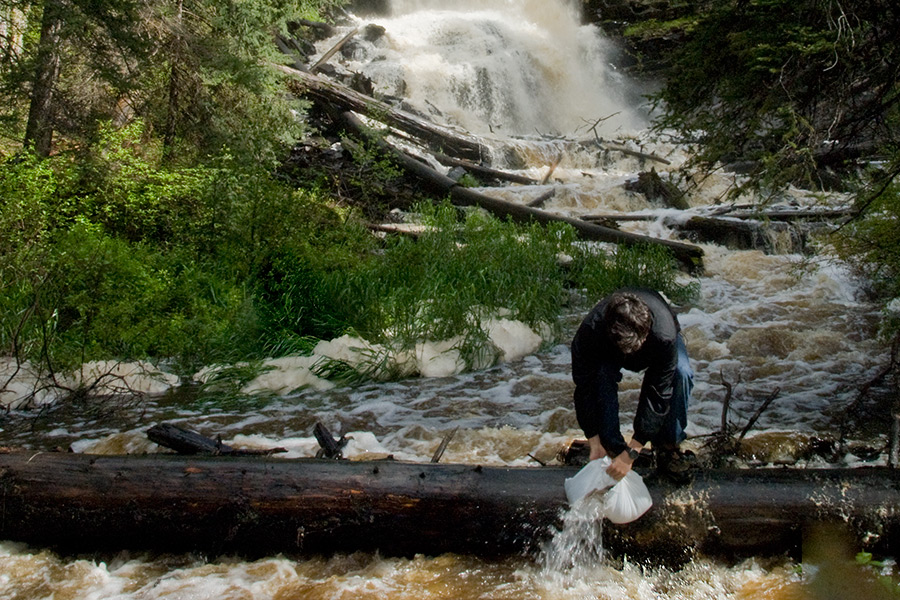MARION – Two weeks ago, Brandon never imagined being in Montana.
It was two weeks ago that he tested positive for opiates and his mother discovered his addiction; two weeks ago that he was woken up at 5 a.m. and taken to the airport; two weeks ago that he began his rehabilitation.
And now he’s at the base of Hidden Falls, under the deep blue skies of Northwest Montana. Surrounded by mist, Brandon walks out onto a slick log and bites into a white trash bag releasing dozens of small trout downstream.
Brandon, who was only allowed to give his first name, is 15 years old and from a suburb of Sacramento, Calif. Since May he has been a resident at the Wilderness Treatment Center in Marion, about 30 miles west of Kalispell.
Established in 1983, the Wilderness Treatment Center helps males between the ages of 14 and 24 overcome dependence on drugs and alcohol, with extensive therapy and treatment at its 4,000-acre ranch. Besides trying to restore some sort of order in their lives, the center has residents help with community service projects, including the restocking of trout at Hidden Lakes, in coordination with the Montana Department of Fish, Wildlife and Parks.
“Most have taken from their community and this gives them an opportunity to give back in a small way,” counselor Shawn Barnett said.
The partnership was the brainchild of Regional Fisheries Manager Jim Vashro, who needed help restocking the westslope cutthroat trout in Hidden Lakes after they were nearly destroyed by the aggressive yellow perch a decade ago.
“I figured that those guys are a lot tougher than I am,” Vashro said, laughing. “But I also thought that they’d enjoy giving back a little bit and help stock the fish.”
The treatment center liked the idea, and once a year for the past seven years Vashro fills a truck with over 2,000 young trout – only measuring a few inches long – and drives up to Marion where he meets with the residents for a few minutes to explain what they’re doing. From there, they caravan up back roads to where the residents line up and load white plastic bags full of fish and water into their backpacks for the mile hike down to the falls. Once at the bottom, they open the bag, and release the fish to swim a half-mile downstream to Hidden Lakes.
For many of the residents, the Montana wilderness is a radically new experience, since many of them come from urban areas, according to Wilderness Instructor Glenn Brown.
“A lot of them are really outside their comfort zone,” Brown said, adding that the experience should help them build confidence.
And for some, it’s an opportunity they never knew they’d have, like J.C., 20, who came to the center from New York after abusing alcohol and marijuana.
“Never in my right mind would I have willingly come to Montana,” he said. “(But) I’m kind of glad I’m in the situation that I’m in because I’ve learned to appreciate all the little things in my life.”
For others, like Brandon, the transition has been tougher. He said he considered running away on more than one occasion, but decided against it, knowing that he’d get caught. Although it has taken time, Brandon is starting to settle in and make friends.
“Once I got here I started hating it less and less,” he said.
For now Brandon plans to stick through the entire 60-day program and hopes that this experience will help him and his family.
“I’d like to stay sober and have my family be proud of me,” he said, “rather than ashamed of me for once.”
